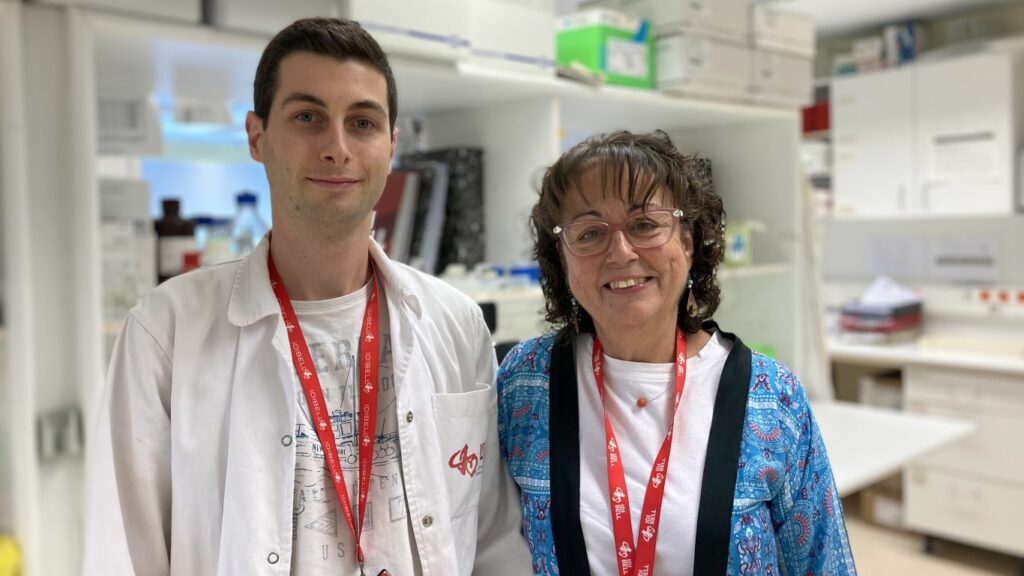Iron accumulation and cellular sensescence have been linked to liver fibrosis, a condition in which the liver develops fibrous tissue (scar-like) due to chronic damage, as occurs in chronic hepatitis and liver cancer. Although the connection between these two factors has been identified, how they could be mechanistically related had not been thoroughly investigated. In this regard, a new study, led by IDIBELL researcher Isabel Fabregat, addresses this question and explores whether an iron chelator—that is, a type of drug that neutralizes iron—could prevent liver fibrosis by reducing the aging of liver cells.
Published in the journal Cell Death and Disease, the study uses an experimental model of chronic liver damage in mice, induced with carbon tetrachloride (CCl4), to examine how iron accumulation is related to liver fibrosis and cellular aging. The researchers have discovered that during the progression of liver fibrosis, iron accumulates in the liver, which coincides with the appearance of fibrous areas and senescent liver cells. The results arise from a Retos-Colaboración project funded by the State Research Agency carried out by researchers from IDIBELL (Josep Amengual and Isabel Fabregat), CIC bioGUNE (M Luz Martínez-Chantar) —both belonging to CIBEREHD—, and IRB Barcelona (Manuel Serrano and Mate Maus, current leader of the Aging and Cancer Group at the Vall d’Hebron Institute of Oncology – VHIO).
The hepatocytes, the main cells of the liver, of the treated animals showed a gene expression profile (known as a transcriptomic signature) related to iron accumulation and cellular senescence. This signature also included activation of genes related to oxidative stress, activation of the TGF-beta pathway, and inhibition of oxidative metabolism.
Treatment with deferiprone, an iron chelator, reduced iron accumulation, fibrosis, and cellular aging in the liver of mice. Furthermore, the profile of proteins secreted by senescent cells changed towards a more anti-inflammatory profile.
In experiments with human liver cells, it was observed that iron accumulated in response to an agent that induces cellular senescence, and that deferiprone could prevent this senescence and its associated effects. However, deferiprone had no significant effect on hepatic stellate cells, which also play a role in liver fibrosis.
In conclusion, the study demonstrates that iron accumulation is an important factor in the progression of liver fibrosis and cellular senescence. The findings suggest that the use of iron chelators could be an effective strategy to slow down or prevent liver fibrosis by reducing cellular senescence in hepatocytes. This fact could open new opportunities for the treatment of chronic liver diseases and improve the quality of life of affected patients.
The Bellvitge Biomedical Research Institute (IDIBELL) is a biomedical research center created in 2004. It is participated by the Bellvitge University Hospital and the Viladecans Hospital of the Catalan Institute of Health, the Catalan Institute of Oncology, the University of Barcelona and the City Council of L’Hospitalet de Llobregat.
IDIBELL is a member of the Campus of International Excellence of the University of Barcelona HUBc and is part of the CERCA institution of the Generalitat de Catalunya. In 2009 it became one of the first five Spanish research centers accredited as a health research institute by the Carlos III Health Institute. In addition, it is part of the “HR Excellence in Research” program of the European Union and is a member of EATRIS and REGIC. Since 2018, IDIBELL has been an Accredited Center of the AECC Scientific Foundation (FCAECC).

